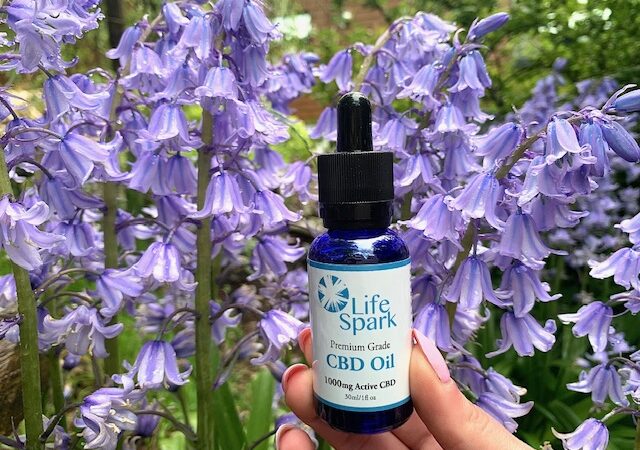
Easy Ways to Cook with Less Oil
In today’s health-conscious world, many individuals are looking to reduce their oil intake without sacrificing flavor or satisfaction in their meals. Cooking with less oil can lead to healthier eating habits and is particularly beneficial for those looking to lose weight or manage conditions like heart disease. Fortunately, there are numerous easy and effective strategies to help you achieve delicious results while minimizing oil use. Here are some practical tips and techniques to help you cook with less oil.
1. Embrace Cooking Methods That Require Less Oil
Steaming
Steaming is one of the healthiest cooking methods available. By using a steam basket or a steaming pot, you can cook vegetables, fish, and even some grains without any oil. This technique retains nutrients while allowing flavors to shine through. For a flavor boost, try adding herbs, spices, or a splash of lemon juice to the water before steaming. Steamed vegetables can be incorporated into various vegetarian high protein recipes, making them nutritious and delicious.
Baking and Roasting
Baking and roasting are excellent alternatives to frying and sautéing. You can prepare a variety of dishes, including vegetables, meats, and casseroles, with minimal oil. Instead of coating your food in oil, try using a light spray of cooking spray or lining your baking sheets with parchment paper to prevent sticking. You can also toss your vegetables with just a teaspoon of oil mixed with spices for flavor.
Grilling
Grilling is another healthy cooking method that requires little to no oil. The high heat creates a flavorful sear on meats and vegetables without needing excessive oil. To keep food from sticking, preheat your grill well and use a non-stick spray or lightly oil the grill grates. Marinating proteins in a mixture that includes acidic ingredients like vinegar or citrus juice can enhance flavor without additional oil.
2. Utilize Non-Stick Cookware
Investing in high-quality non-stick pans can significantly reduce the amount of oil needed for cooking. These pans allow you to sauté, fry, and scramble eggs without requiring a significant amount of oil to prevent sticking. Just remember to use silicone, wooden, or plastic utensils to avoid scratching the surface, which can lead to food sticking.
3. Substitute Oil with Other Ingredients
Broth or Stock
Using vegetable or chicken broth instead of oil can add moisture and flavor to your dishes while keeping them low in calories. This technique works well for sautéing vegetables or cooking grains. Just be sure to choose low-sodium broth to keep your meals healthy.
Applesauce or Pureed Fruits
For baking, consider replacing oil with unsweetened applesauce or pureed fruits like bananas. This not only reduces the fat content but also adds natural sweetness to your baked goods. A typical substitution is to replace every cup of oil with one cup of applesauce.
Yogurt
Plain yogurt can serve as a substitute for oil in dressings, marinades, and even baking recipes. It adds creaminess without the extra calories and fat. For instance, use yogurt in place of oil for salad dressings, or replace oil with yogurt in pancake recipes.
4. Use Herbs and Spices for Flavor
Often, oil is used to enhance flavor in dishes. However, there are countless herbs and spices that can impart a rich taste without adding fat. Experiment with fresh herbs like basil, cilantro, or parsley, and spices such as cumin, paprika, or turmeric to elevate your meals. Adding a splash of lemon juice or vinegar can also brighten dishes and make them more flavorful.
5. Experiment with Air Frying
Air frying is a popular cooking method that allows you to enjoy crispy foods with significantly less oil. Air fryers circulate hot air around the food, producing a similar texture to deep frying but with much less fat. You can use a light spray of oil or none at all, making it a healthier alternative for making fries, chicken, and even baked goods.

6. Try Cooking Techniques That Don’t Require Oil
Poaching
Poaching is a gentle cooking method that involves simmering food in liquid, usually water, broth, or wine. This technique is perfect for eggs, fish, and chicken, allowing the flavors to develop without any added fat.
Blanching
Blanching involves briefly cooking food in boiling water, then quickly transferring it to an ice bath to stop the cooking process. This method is great for vegetables, helping them retain color, texture, and nutrients. It also enhances the natural flavors without the need for oil.
Pressure Cooking
Using a pressure cooker can also help you reduce oil in your cooking. This method cooks food quickly, locking in moisture and flavor. You can create flavorful dishes with little to no oil, making it ideal for soups, stews, and grains.
7. Portion Control on Oil Usage
If you find it challenging to cook without oil entirely, consider controlling the amount you use. Instead of drenching your ingredients in oil, try measuring out a specific amount, like a tablespoon, and sticking to it. This way, you still enjoy the benefits of oil while keeping it in moderation.
8. Read Labels and Choose Healthier Oils
If you must use oil, opt for healthier options such as olive oil, avocado oil, or coconut oil. These oils contain beneficial nutrients and healthy fats. Additionally, be mindful of the amounts you use; even healthy oils can contribute excess calories if used liberally.
9. Incorporate Vegetables for Natural Moisture
Vegetables like tomatoes, zucchini, and bell peppers release moisture as they cook, which can help keep dishes moist without needing added oil. Sauté these vegetables first in a non-stick pan, and they’ll create their own base, adding depth and flavor to your meals.
10. Make Use of Marinades
Marinating proteins not only enhances their flavor but can also keep them moist during cooking. You can create a marinade using vinegar, citrus juice, or yogurt as a base, allowing the meat to absorb flavors without the need for oil.
Conclusion
Cooking with less oil doesn’t mean sacrificing flavor or enjoyment in your meals. By adopting healthier cooking methods, utilizing non-stick cookware, experimenting with substitutes, and being mindful of how you flavor your food, you can enjoy delicious meals while promoting a healthier lifestyle. With these easy strategies, you can take control of your cooking habits and pave the way for a healthier, more balanced diet. So, grab your apron, embrace these tips, and start cooking your favorite meals, including vegetarian high protein recipes, with less oil today!






